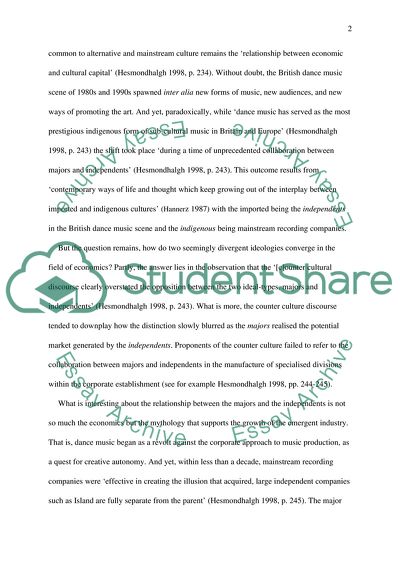Cite this document
(The Main Goal of Cultural Industries Essay Example | Topics and Well Written Essays - 1500 words - 1, n.d.)
The Main Goal of Cultural Industries Essay Example | Topics and Well Written Essays - 1500 words - 1. https://studentshare.org/culture/1737941-do-the-cultural-industries-make-money-or-art-discuss-with-reference-to-a-specific-cultural-producer-and-its-products-for-example-a-film-production-company-a-newspaper-or-a-website
The Main Goal of Cultural Industries Essay Example | Topics and Well Written Essays - 1500 words - 1. https://studentshare.org/culture/1737941-do-the-cultural-industries-make-money-or-art-discuss-with-reference-to-a-specific-cultural-producer-and-its-products-for-example-a-film-production-company-a-newspaper-or-a-website
(The Main Goal of Cultural Industries Essay Example | Topics and Well Written Essays - 1500 Words - 1)
The Main Goal of Cultural Industries Essay Example | Topics and Well Written Essays - 1500 Words - 1. https://studentshare.org/culture/1737941-do-the-cultural-industries-make-money-or-art-discuss-with-reference-to-a-specific-cultural-producer-and-its-products-for-example-a-film-production-company-a-newspaper-or-a-website.
The Main Goal of Cultural Industries Essay Example | Topics and Well Written Essays - 1500 Words - 1. https://studentshare.org/culture/1737941-do-the-cultural-industries-make-money-or-art-discuss-with-reference-to-a-specific-cultural-producer-and-its-products-for-example-a-film-production-company-a-newspaper-or-a-website.
“The Main Goal of Cultural Industries Essay Example | Topics and Well Written Essays - 1500 Words - 1”. https://studentshare.org/culture/1737941-do-the-cultural-industries-make-money-or-art-discuss-with-reference-to-a-specific-cultural-producer-and-its-products-for-example-a-film-production-company-a-newspaper-or-a-website.


